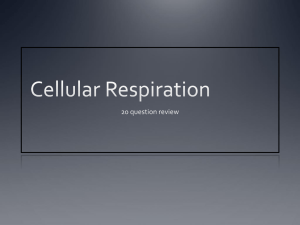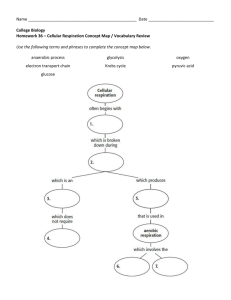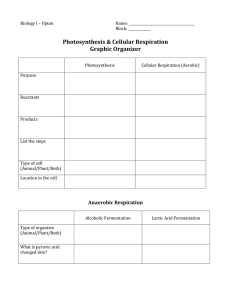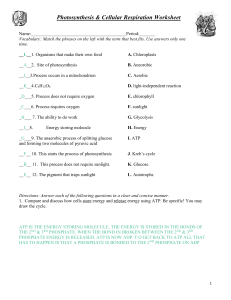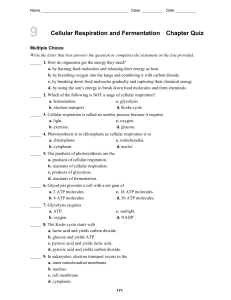Cellular Respiration: Class Notes on ATP Production
advertisement
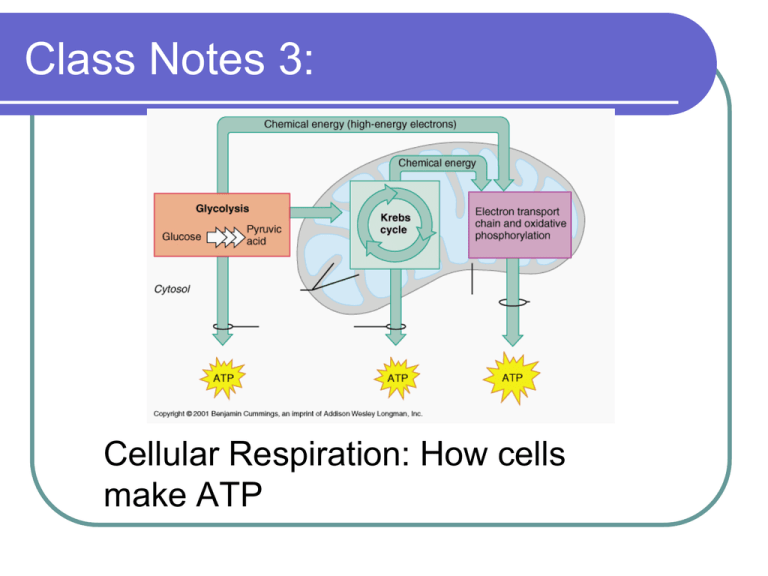
Class Notes 3: Cellular Respiration: How cells make ATP I. Step 1: Glucose enters the cell A. B. In plants, it has been made by photosynthesis. In animals, it has been eaten. II. Step 2: Glycolysis The glucose is broken in half into 2 molecules called pyruvic acid. (C6H12O6 2C3H6O3 2C3H4O3 ) B. Uses 2 ATP, but makes 4. A. III. Step 3: Kreb’s cycle (citric acid cycle) A. Takes place in the mitochondria B. The Krebs cycle is a series of chemical reactions that takes the energy from the pyruvic acids and passes it to other molecules. 1. CO2 is released as waste. 2. Two ATP are made. IV. Step 4: Electron Transport Chain The high energy molecules from the Kreb’s Cycle are used to create 32 ATP. B. Oxygen is used to accept the electrons, so this is an aerobic process. C. Water and heat are released as waste. D. The formula for cellular respiration is C6H12O6 + 6O2 6H2O + 6CO2 + (ATP) A. V. Lactic Acid Fermentation During times of strenuous activity (weight lifting, sprinting), your body can’t get enough oxygen. B. Fermentation allows glycolysis to continue without oxygen (anaerobic). C. Creates a small amount of ATP. D. Pyruvic Acid is converted to Lactic Acid. A. Summary What are the 4 steps of cellular respiration? What is the difference between aerobic and anaerobic respiration?
